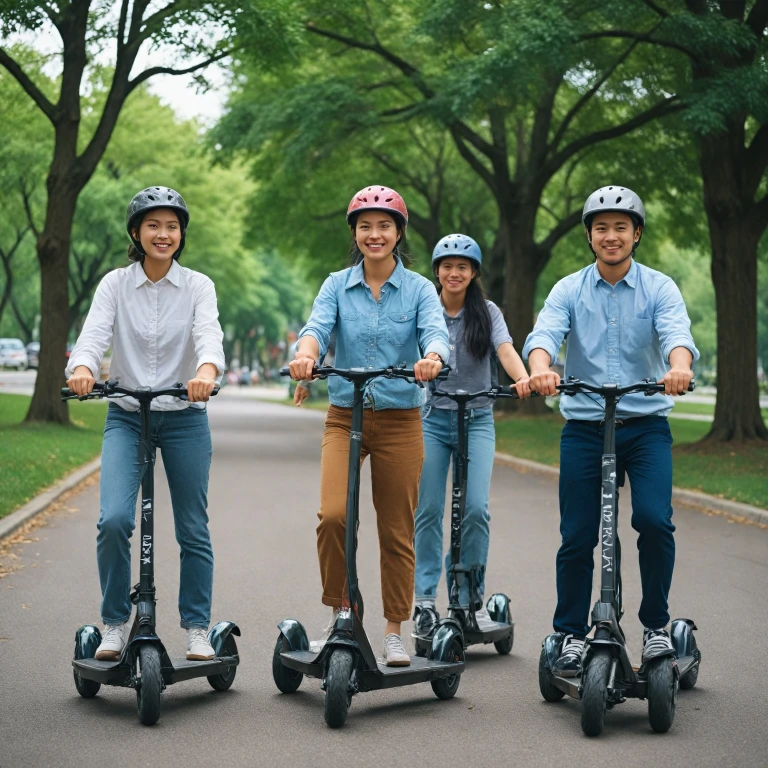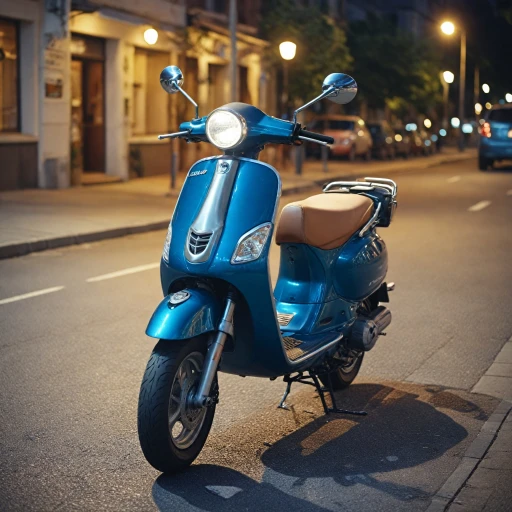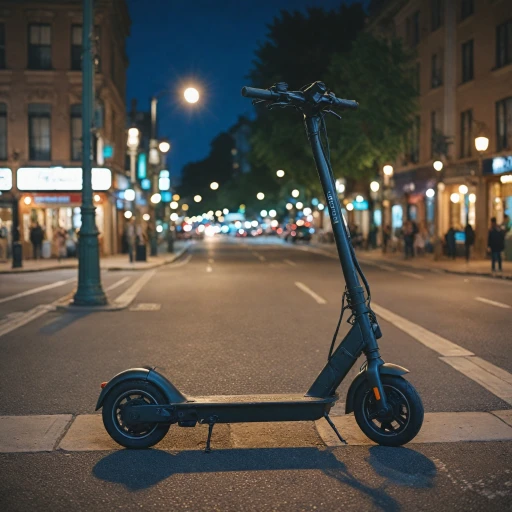Understanding the Need for Helmets
Why Helmets Matter When Riding Electric Scooters
Riding electric scooters has become increasingly popular, not just as a fun activity, but also as a practical means of transportation. However, safety cannot be overstated, and that’s where helmets come in. A helmet isn't a mere accessory; it's an essential piece of gear that can protect you in case of any unforeseen incidents. Electric scooters can reach speeds of up to 20 mph, and this speed, combined with urban traffic, can pose substantial risks. In any situation where there's potential for falling or crashing, protection is vital. Helmets can significantly reduce the risk of serious head injuries, offering reassurance whether you're commuting on your electric scooter or enjoying a leisurely ride. While it might be tempting to skip headgear on shorter rides, it’s important to remember that accidents can occur at any speed. Choosing a durable and comfortable helmet is necessary for ensuring effective protection. Various types of helmets are available, including open face and full face options, each providing different levels of coverage and flexibility. Understanding the importance of a good helmet can make all the difference. Don't let the initial price of a quality helmet deter you; consider it a worthwhile investment in your personal safety. As you'll explore further in subsequent sections, selecting the right helmet involves considering factors such as size, weight, comfort, and additional features to enhance protection and visibility while riding your scooter.Choosing the Right Helmet for Electric Scooters
Finding the Perfect Fit for Your Safety Needs
Choosing the right helmet for electric scooter rides is crucial to ensure optimal protection and comfort. With a myriad of helmet options available, from bicycle helmets to full face motorcycle helmets, it can seem daunting to pick the perfect one that fits your needs and style. When selecting a scooter helmet, consider the following key aspects:- Protection Level: The amount of protection you need often depends on the speed and the environment where you'll be riding. For example, an open face helmet might suffice for leisurely rides, while a full face helmet is better suited for faster speeds and off-road biking conditions.
- Helmet Type: Scooter helmets, bike helmets, and even skateboard helmets can be suitable options for electric scooters. Full face helmets with chin bars offer additional facial protection, while open face or road biking helmets might offer less coverage but more visibility and ventilation.
- Size and Fit: A well-fitting helmet is vital for safety. Most helmets come in a range of sizes, so it's important to measure your head circumference to find the right fit. A snug but comfortable fit will ensure the helmet stays in place during a ride.
- Features: Consider helmets with integrated features such as visors for eye protection or smart helmet technology that might include Bluetooth connectivity or rear lights for added visibility.
- Price and Quality: While it's essential to find a helmet within your budget, don't compromise on quality. Well-known brands often provide better protection and safety certifications, which is vital when traveling at speeds upwards of 15 mph on electric scooters.
Safety Standards and Certifications
The Significance of Adhering to Safety Standards and Certifications
A crucial aspect of selecting a well-fitting helmet for your electric scooter journeys involves understanding the value of safety standards and certifications. These certifications assure riders that the product they choose meets specific safety requirements and offers adequate protection from potential head injuries. By aligning helmet options with these standards, you guarantee enhanced safety during electric scooter rides.
Common certifications you might encounter include the CPSC certification, which is mandatory for bicycle helmets in certain countries. This ensures that the helmet can withstand impacts that might occur while riding scooters, bikes, or skateboards. Additionally, ASTM standards are prevalent in testing helmets for protection against multiple impacts, and the Snell Foundation provides rigorous testing for motorcycle helmets, which can be insightful for selecting both full-face and open-face helmet designs.
The best approach is to familiarize yourself with the certifications that apply to your region and look for labels or markers on the products. This knowledge ensures your helmet with a scooter, bike, or electric ride meets the reliable and quality standards crucial for safety.
Furthermore, liners for helmets are designed to meet these certifications, offering added safety through impact absorption. For those investing in top-tier helmet options with advanced technology (such as a smart helmet), it's crucial to verify that the innovative features comply with traditional and modern safety requirements.
Always remember, a helmet's certification can indicate a balance of price and value, ensuring you don’t compromise on protection while enjoying the freedom of riding electric scooters. For further tuning of your scooter performance and safety pairing strategy, consider checking out this guide on what constitutes an effective electric scooter upgrade, such as tire enhancements on the Unagi E500.
Common Mistakes When Using Helmets
Common Missteps in Helmet Usage
When it comes to using a helmet with your electric scooter, certain common mistakes can undermine your safety. While helmets are designed to offer protection, improper use can negate their effectiveness. Here are some pitfalls to avoid:
- Incorrect Sizing: One of the most frequent errors is choosing a helmet that doesn't fit properly. A helmet that's too loose or too tight can significantly reduce protection. It's crucial to try on different sizes and select one that fits snugly without causing discomfort.
- Wrong Type of Helmet: Not all helmets are created equal. For electric scooters, a bike helmet or a scooter helmet is generally recommended. These options provide adequate coverage and protection for the speeds typically achieved on scooters, which can reach up to 20 mph or more.
- Ignoring Safety Standards: Helmets should meet specific safety standards and certifications to ensure they provide the necessary protection. Look for products that are certified by recognized authorities.
- Improper Wearing: Even the best helmet won’t protect you if it’s not worn correctly. Ensure the chin strap is fastened securely, and the helmet sits level on your head, covering the forehead.
- Neglecting to Replace After Impact: Helmets are designed to absorb impact energy, which means they can only protect you effectively once. After a significant impact, it's important to replace your helmet, even if it appears undamaged.
- Overlooking New Technologies: With advancements in smart helmet technology, there are now helmets with enhanced features like integrated visors, LED lights, and Bluetooth connectivity. These innovations can enhance safety and convenience, so consider these options when selecting a helmet.
By avoiding these common mistakes, you can ensure that your helmet provides the protection you need while riding your electric scooter. Remember, integrating helmets into your riding routine is a vital step towards safe and responsible riding.
Integrating Helmets into Your Riding Routine
Incorporating Helmet Use into Daily Scooter Rides
Making helmets a non-negotiable part of your electric scooter routine is crucial for your safety. It's similar to how you might automatically put on a seatbelt when driving a car or snap on a bike helmet before a bicycle ride. Here’s how to seamlessly integrate helmet use into your scooter life:- Habit Building: Consistency is key. Start by placing your scooter helmet with your other commute essentials—like your keys or backpack. This habit formation ensures that wearing your helmet becomes second nature, akin to brushing your teeth every morning.
- Optimal Choices: Choose a helmet that matches your riding style and comfort preferences. There are numerous helmet options available, from full face motorcycle helmets to open face scooter helmets, and even smart helmets with advanced features like visors and communication tools. Selecting the right product can influence how likely you are to wear it regularly.
- Adapting to Different Conditions: Each riding scenario can pose unique risks, whether you're navigating busy city streets or winding mountain bike trails. Having a helmet with the appropriate protection level is essential, especially if your rides vary in intensity and speed (such as going beyond 20 mph).
- Maintenance of Gear: Regularly inspect your helmet for any signs of damage or wear, such as cracks or degraded padding. Helmets can lose effectiveness over time, so maintaining your protective gear ensures it will perform when needed.
- Gearing for Style and Safety: A helmet's appearance shouldn't discourage use. With stylish designs available, you can find a helmet that suits your look while providing safety. Whether you're into the sleek design of a full face road biking helmet or the more relaxed vibe of an open face bicycle helmet, options abound that marry aesthetics with practicality.
Innovations in Helmet Technology
Advancements in Helmet Technology
The world of helmets, particularly for electric scooters, is continuously evolving with new innovations designed to enhance safety and comfort. As electric scooters enable speeds often exceeding 15 mph, helmets must adapt to provide better protection while also catering to the modern rider's needs.- Smart Helmets: A rising trend is the integration of technology into scooter helmets. Smart helmet options come equipped with features such as Bluetooth connectivity, built-in speakers, and hands-free phone capabilities. These features, while offering convenience, also necessitate heightened awareness of safety standards and certifications.
- Improved Materials: Modern bicycle helmets and scooter helmets are incorporating advanced materials that are lightweight yet robust. Carbon fiber and polycarbonate shells are common in full-face motorcycle helmets, offering strength without the added weight. This makes them excellent choices for electric scooters and bicycles where head comfort is paramount.
- Aerodynamics and Ventilation: Helmet designs are now more aerodynamically sound, reducing wind drag at higher speeds. Additionally, new vent configurations in skateboard helmets and bicycle helmets improve airflow, ensuring your journey remains cool and comfortable.
- Convertible Options: For those who fluctuate between a more protected and open ride, convertible helmets provide the ideal solution. Offering a blend of full face protection with a removable chin bar, these models cater to a range of activities from bmx riding to leisurely scooter commutes.
- Environmental Sensors: Some helmets are equipped with environmental sensors that monitor air quality and alert riders of pollution levels. This innovation speaks to a health-conscious society seeking safety both from physical impact and environmental hazards.




